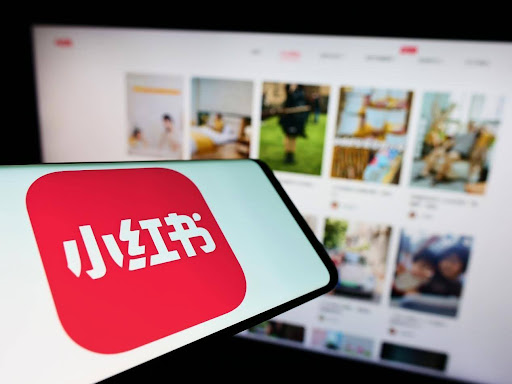As more US and global brands turn to livestream marketing, they need to carefully plan their strategy for the China market because missteps can be costly and embarrassing, as one global luxury brand recently learned. China is the leading ecommerce and livestream market in the world.
On Oct. 27, Traffic Yellow, the apprentice of top Douyin (China’s TikTok equivalent) key opinion leader (KOL) Crazy Little Brother Yang (“疯狂的小杨哥” in Chinese), created a scandal for French luxury brand YSL. Her indecent hair and contorted facial expressions disturbed viewers while she promoted YSL beauty products during her livestream. Many consumers complained the show cheapened the YSL brand image.
This unfortunate example offers important lessons for brands trying to leverage livestreams for marketing and to drive sales. The livestreaming ecommerce market in China reached about $311.8 billion in 2021 and will surge to $673 billion by the end of 2023, representing a 115.8% increase. That’s why a growing number of US and global brands now want to know how to seize the immense opportunity of livestreaming in China for rapid brand growth. Let’s examine common problems, proven solutions and more practical tips for brands to successfully invest in livestreaming.

Common problems brands during live commerce
Livestreaming has gained immense popularity among consumers in China, primarily due to the allure of attractive discounts and deals. However, it’s crucial to recognize that an overreliance on low-pricing strategies can have negative effects on brand equity, stopping consumers from purchasing regular-priced items from the brand.
This phenomenon often stems from an excessive reliance on influential KOLs who possess strong bargaining power. These KOLs have the ability to drive down prices and erode profit margins. For instance, consider “Lipstick King” Austin Li, a top KOL in China, who faced criticism for entering into the lowest price contracts with merchants. His approach ensured that the prices he offered during livestreams were the most enticing on the internet. In order to collaborate with him and boost their sales, merchants were often compelled to compromise and sacrifice their brand’s perceived value.
Selecting the right KOL is another significant challenge that many brands encounter. KOLs essentially become brand ambassadors during livestreams, making it crucial to evaluate them based on various factors, such as their profile, personality, habits and style, to ensure a successful partnership. The lessons learned from YSL’s experience should serve as valuable insights for niche brands.
In addition to KOL livestreams, brands often opt for self-operated sessions, although they may yield a lower return on investment due to various factors. First, brands may lack sufficient understanding of Chinese livestream platforms, leading to difficulty in identifying those that align with their target audience.
Second, inefficient traffic utilization is another potential issue. Alibaba reports a 20% increase in the number of users scanning Taobao during the nighttime compared to the daytime, and they’re spending the most time on livestreams and short videos. Livestream anchors, like everyone, need rest, especially during key periods like nighttime, potentially causing brands to miss engaging with customers who prefer night shopping.
How brands can prevent livestream problems
Before any investment in livestreams, brands should adjust their goals according to brand strategies, such as driving sales or building a brand image. Low prices strategies would be suitable to increase sales. To build a brand presence, brands must prioritize finding the right fit in terms of livestream style and approach. For example, quiet selling, which describes the slow paced, storytelling-oriented style of livestreaming, has gained traction in China. It is a very different approach compared to traditional livestreams. Annie Yi, a Taiwanese singer reminded viewers of their self-worth instead of emphasizing the ingredients and prices of beauty products during her livestream on Little Red Book (LRB, also called Xiaohongshu in China). Her show attracted over 1 million viewers and generated nearly $6.8 million, topping LRB’s livestream sales chart. That’s because she replaced the traditional hard sell focused on products with a gentler soft sell focused on viewers.

Credit: Shutterstock
Florasis, a Chinese beauty brand promoted by Austin Li, received a backlash this year due to his infamous livestream berating women for not having the financial means to afford the products when promoting a Florasis eyebrow pencil. Because of the incident and inappropriate PR strategies, Florasis’s gross merchandise value (GMV) decreased 63% as of Oct. 31 during the pre-sale for 2023 Single’s Day, as reported by Tmall. Therefore, finding the right livestream anchors is important.
To increase the ROI of self-operated livestreams, AI-generated content could be a feasible approach. Virtual hosts are available 24/7 to serve shoppers around the clock.
AI-generated content also can effectively leverage idle traffic, such as during late-night hours, lowering the cost of human talent and operations. For instance, Alibaba debuted 10 free AI-powered selling features for merchants, as well as a generative AI chatbot to answer users’ queries, which was used by over 5 million people, improving the experience and boosting sales for the 2023 Single’s Day event.
Furthermore, brands can cover multiple platforms to reach their desired customer segments by using their own livestream hosts across several platforms. Last Singles Day, Luo Yonghao, Douyin’s top anchor hosted a livestream on Douyin and Taobao platforms to guarantee most of its traffic, which was unthinkable for a top host to move so freely across sites at that time. However, cross-platform marketing means brands face higher fees and commissions. Therefore, to keep costs under control, consider using a data system or consulting an expert to comprehensively understand the platforms.
More tips you should know about livestreaming
Livestream plus short video is a powerful strategy for pre-marketing and to drive sales.
Short videos can build brand presence, and help brands acquire new customers and accelerate their decision-making process, which creates a “zero moment of truth.” Apart from social commerce platforms like Douyin, LRB and Kuaishou, traditional ecommerce platforms have begun to integrate short video content with transactions. According to the New Retail Think Tank, more than 10,000 brands on Tmall generate over 30% of their revenue through short videos. After being “seeded” (recommended to buy specific products, “种草” in Chinese), brands’ conversion rates during livestreams tend to be much higher.
Live commerce is more like impulse purchases, so the GMV after returns represents the true overall value.
When audiences engage with a livestream, they are frequently influenced by factors such as low prices, a sense of urgency, the behavior of anchors and comments from the community throughout the real-time experience. These elements often contribute to impulsive consumption decisions. However, upon more rational consideration, viewers may choose to return the products. Therefore, evaluating the true success and profitability of the livestream requires careful consideration of the holistic process, including post-purchase behaviors. That’s why brands need to assess not just initial sales but also the overall impact on customer satisfaction and long-term value.
Pay attention to compliance.
To navigate the evolving landscape of live commerce, brands must prioritize their adherence to platform regulations. Before investing in livestreaming, carefully review platform rules and privacy policies, ensuring compliance in content, product claims, age restrictions, and intellectual property protection. This proactive approach safeguards brands from potential issues, and reinforces a secure and compliant presence to win the live commerce competition for consumers’ attention and sales.
In summary, leveraging livestreams can prove invaluable for niche brands seeking to establish a robust presence and accelerate their growth in China. However, opting for the right strategy or seeking guidance from an expert in the initial stages can be a cost-efficient and low-risk approach, ensuring a smoother and more successful integration of livestreaming into a brand’s marketing and expansion efforts.
Franklin Chu is managing director US for Azoya International, a provider of turnkey cross-border e-commerce solutions to assist retailers looking to expand into China through a cost-effective and lower-risk method. In recent years, over 100 retailers and brands in 12 countries have partnered with Azoya to expand into China with ease, including French fashion retailer La Redoute, Australia’s largest pharmacy group, Sigma, as well as Feelunique, the largest online beauty retailer in Europe.
If you liked this article, sign up for SmartBrief’s free email newsletter on Marketing Innovation. It’s among SmartBrief’s more than 250 industry-focused newsletters.
